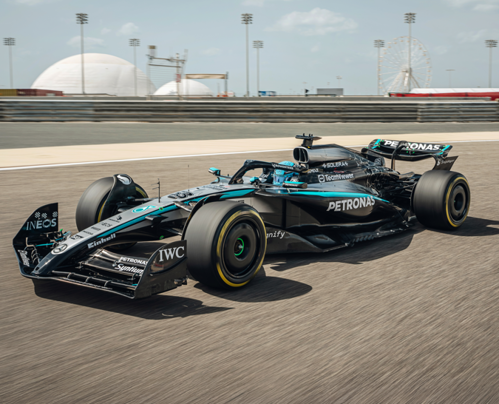Mercedes-AMG Petronas to use sustainable carbon fiber composites in Formula 1 racecars
- This season will be the first time in which innovative sustainable carbon fiber composites will be used in Formula 1 on the W16.
- Efforts in this space have been made possible through close partnership between the Mercedes team and INEOS Nitriles, and collaboration with Toray, Syensqo and Sigmatex.
- Pioneering sustainable materials projects in Formula 1 will provide a significant opportunity to scale this innovation beyond motorsport, to industries such as aviation and aerospace.
- Toto Wolff, Team Principal and CEO, Mercedes-AMG PETRONAS F1 Team said: “When you combine performance and innovation, you create progress. I am proud to lead a team of problem solvers who are committed to driving sustainable change”.
Mercedes announced the first steps on the road towards sustainable carbon fiber composites. In concrete terms, this means that Mercedes will qualify and apply sustainable carbon fiber composites to their race cars during the 2025 Formula 1 season, without sacrificing any on-track performance.

Carbon fiber composites form approximately 75% of its race car materials, helping them to achieve the highest levels of performance and safety. Innovations in these materials provide a significant opportunity to reduce the carbon footprint of the racecar, supporting Mercedes' goal to achieve net-zero across all scopes by 2040.
Carbon fiber composites are primarily formed of two key components: the fibers and the resin system. By weight, approximately 60% of the composite material is formed of fibers, with 40% made up by the resin system. Impregnating the fibers with the resin system, followed by curing, creates a lightweight material with outstanding mechanical performance necessary to meet the unforgiving demands of Formula 1.
Working closely with the FIA within the scope of the relevant regulations, Mercedes aims to demonstrate that sustainable carbon fiber composites can perform to the same technically demanding requirements as traditional materials.
To qualify a carbon fiber composite material for use on the race car, it must undergo rigorous laboratory testing to provide understanding of its technical properties and performance. Transferring from the lab to the racetrack requires further trials and verification to ensure the material behavior aligns with expectations.
The identification and subsequent qualification of sustainable materials solutions would not be possible without the continuous innovation and ongoing support of Mercedes' supply chain; each carbon fiber composite component involves four to eight suppliers to deliver the final product.
To achieve a sustainable carbon fiber composite, both components – the fibers and the resin system – must be addressed. Working collaboratively with its supply chain, the Mercedes team has two separate projects underway for introduction later this year, one of which will address the resin system and one the carbon fibers themselves.






Comments